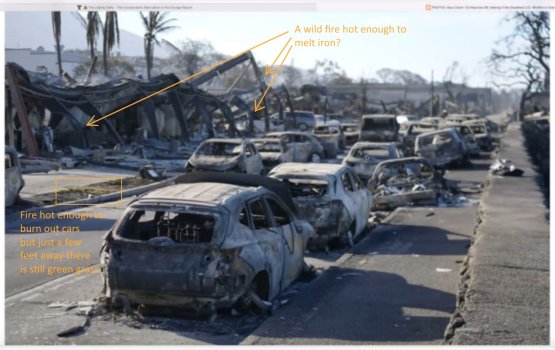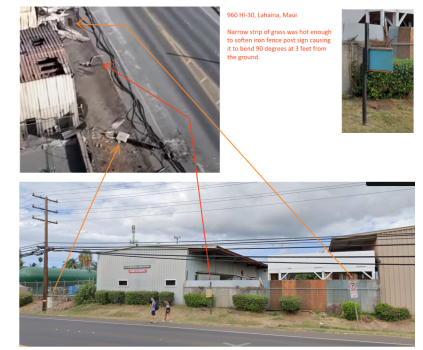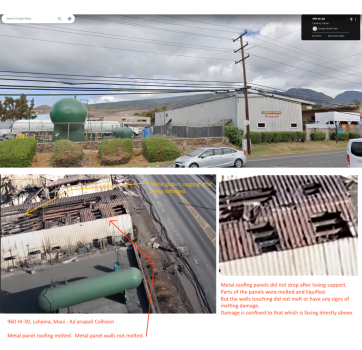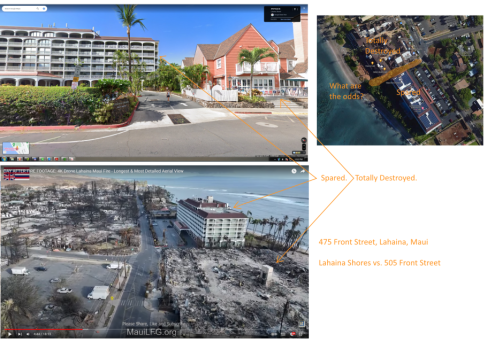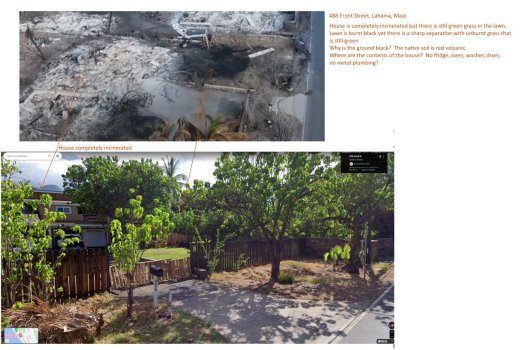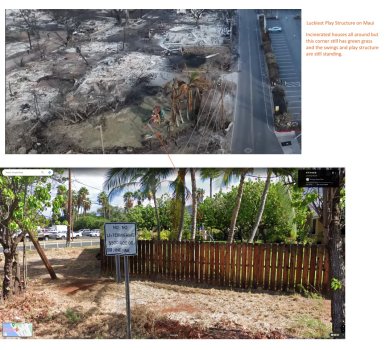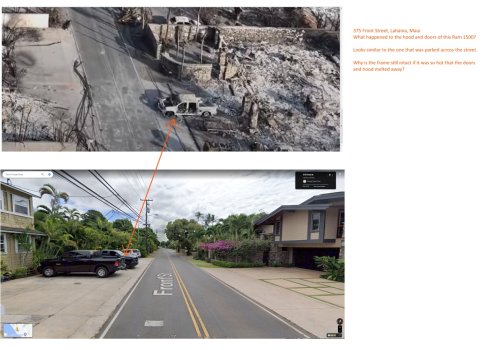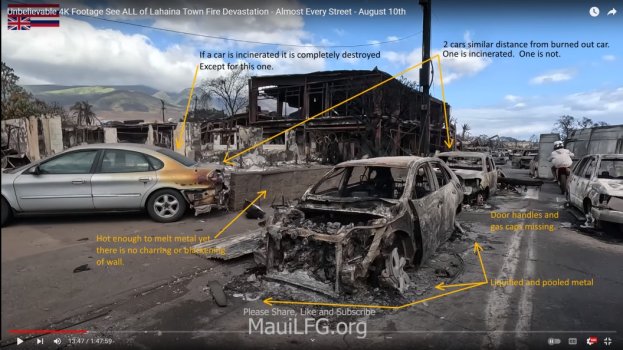Here's some interesting observations about some evidence from the recent Maui fire.
1. 2 cars in a grass field completely destroyed. Melted aluminum running downhill. Melted glass.
2. Field contained only dry grasses.
3. Aluminum melting point 1220 F. Glass liquifies 2552 - 2912 F.
4. Field was burned to property boundaries only. No other properties surrounding it were burned.
5. Field was outside official wildfire zone.
2 images showing field before the fire with the suspected 2 cars sitting in the field.
2 images showing the aftermath of the fire in the field with the burned out cars.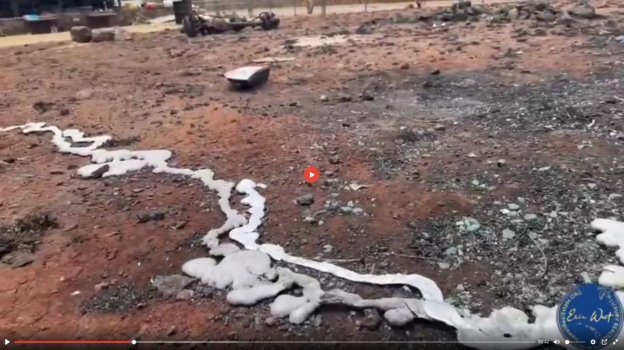
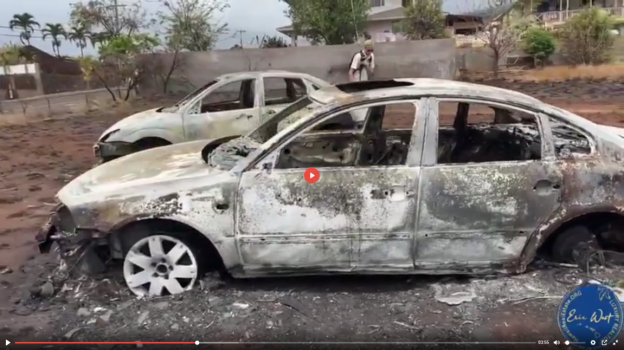
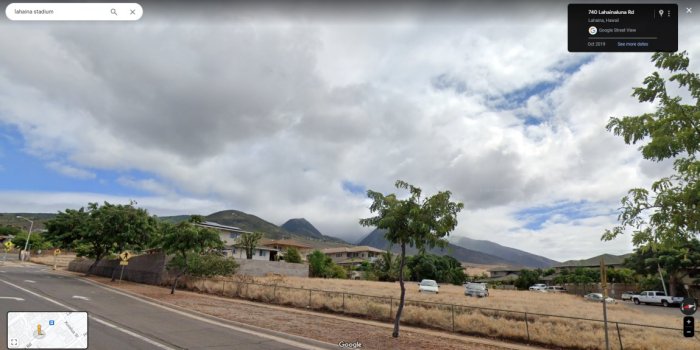
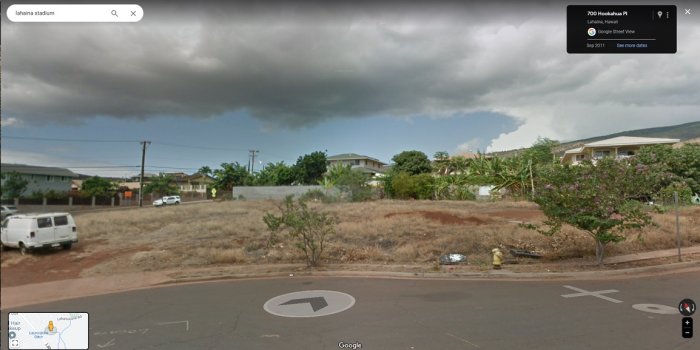
1. 2 cars in a grass field completely destroyed. Melted aluminum running downhill. Melted glass.
2. Field contained only dry grasses.
3. Aluminum melting point 1220 F. Glass liquifies 2552 - 2912 F.
4. Field was burned to property boundaries only. No other properties surrounding it were burned.
5. Field was outside official wildfire zone.
2 images showing field before the fire with the suspected 2 cars sitting in the field.
2 images showing the aftermath of the fire in the field with the burned out cars.






